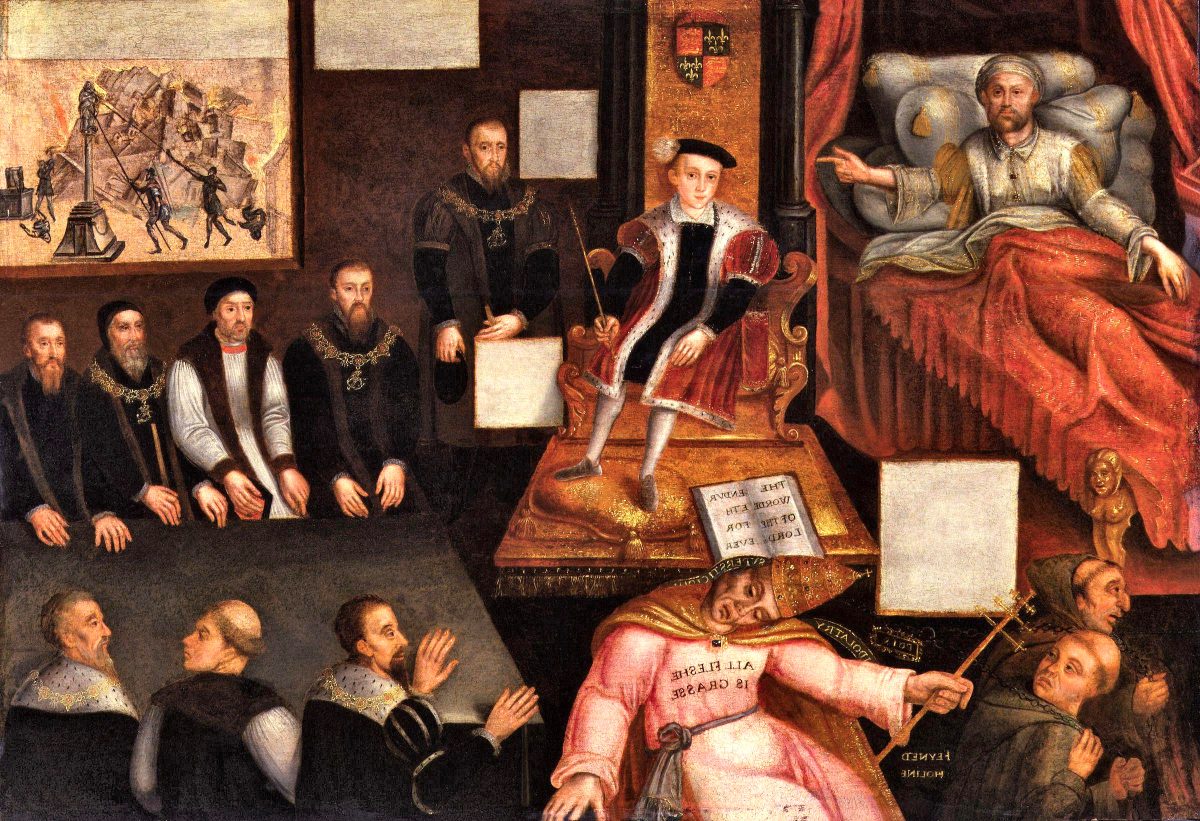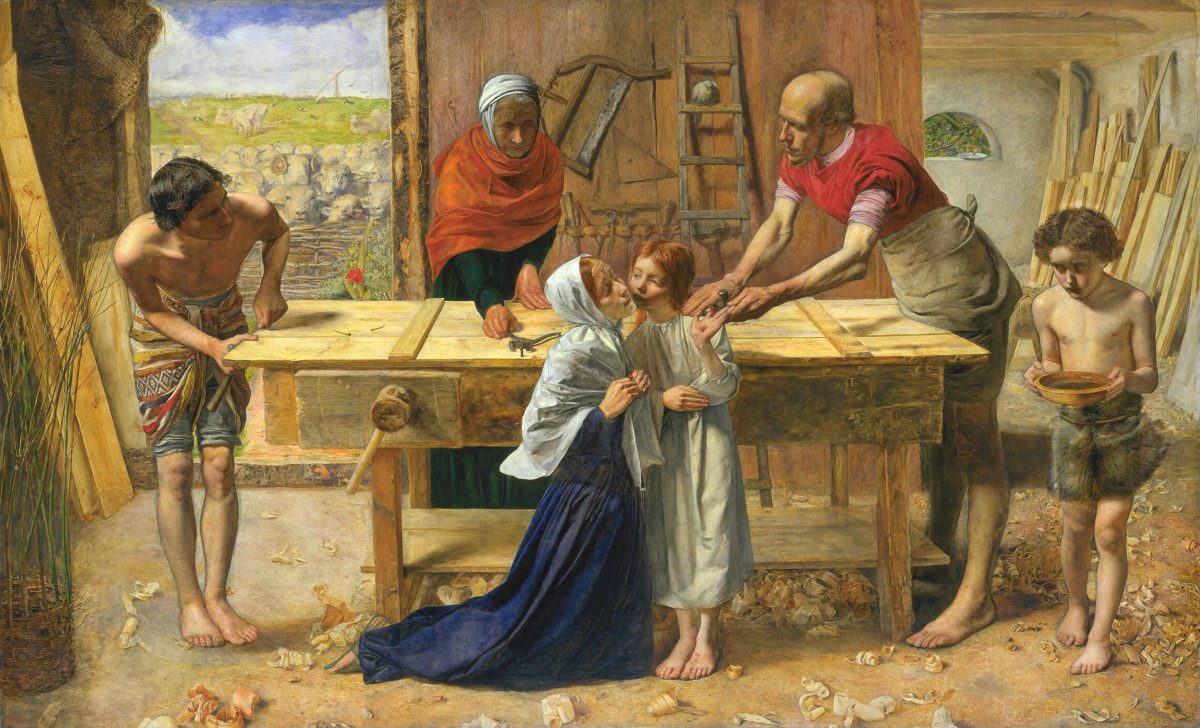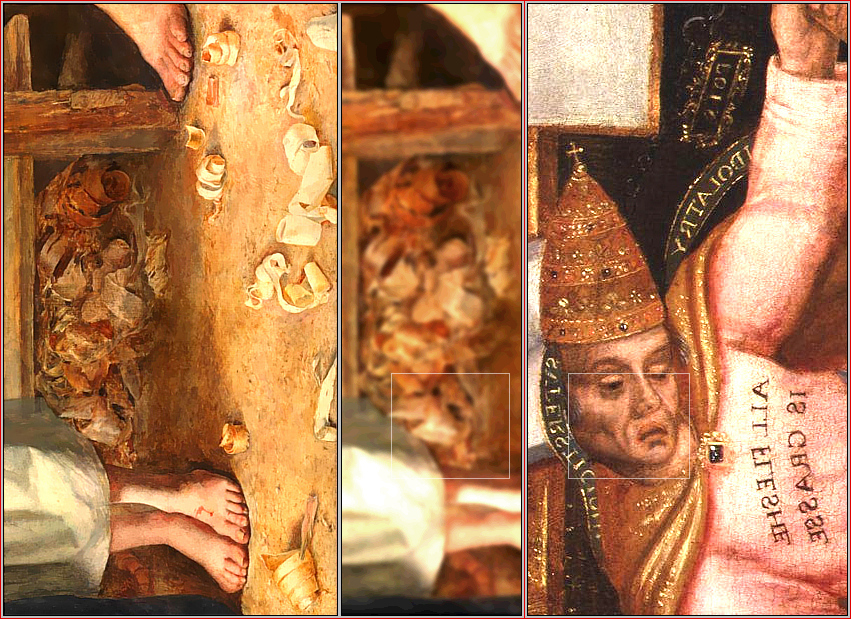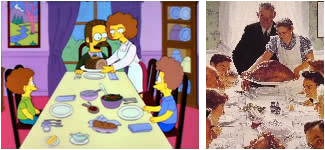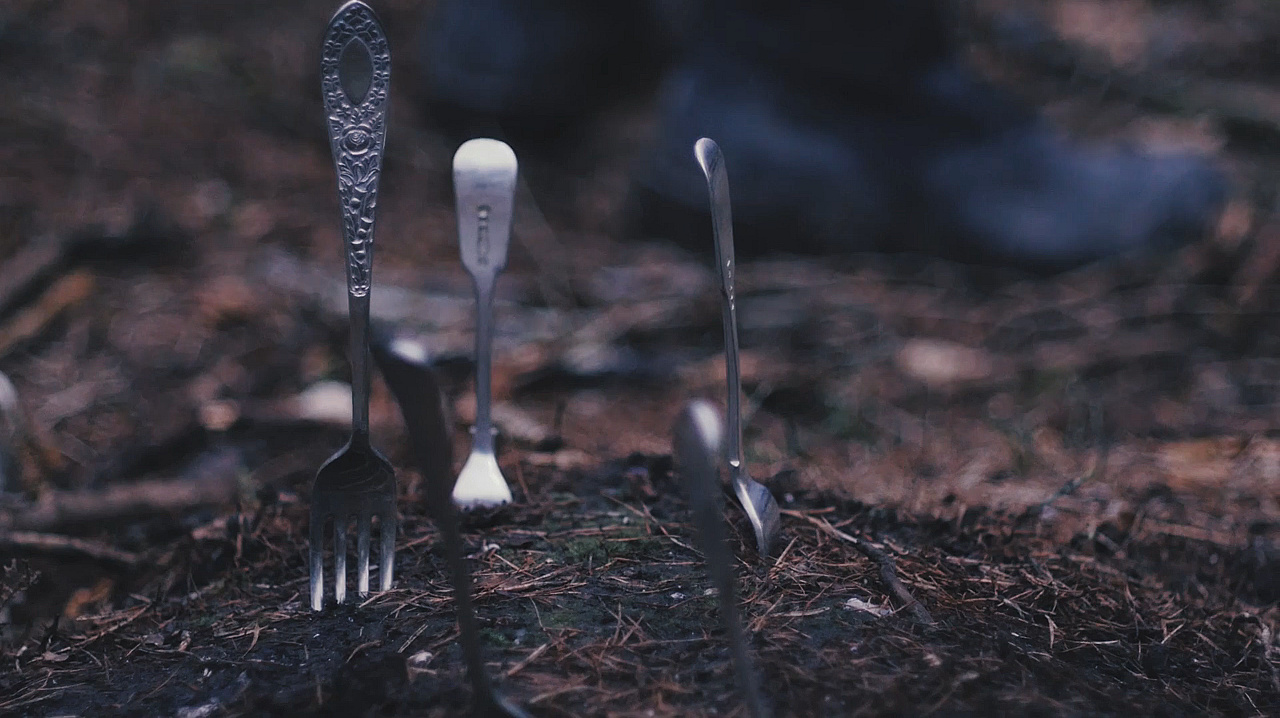
blog
The Joy of Hiding Things in Art
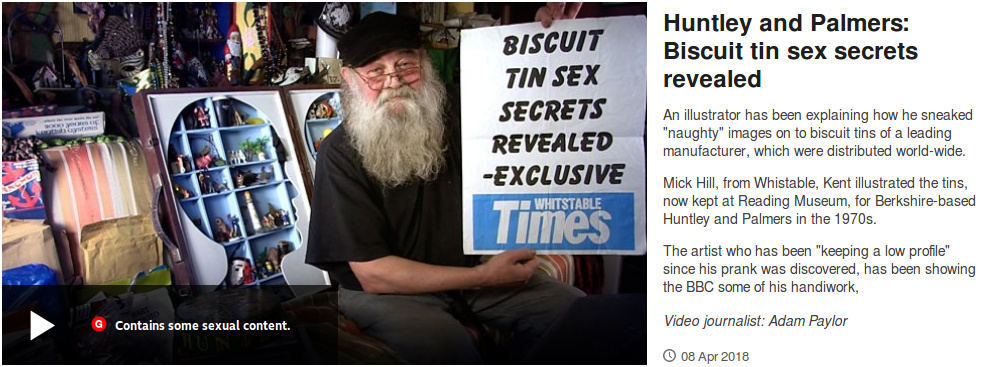
In a BBC video, video journalist Adam Paylor gives us a good example for why things might be hidden in art: Besides assuming that people who see cryptomorphs in artwork might just be suffering from pareidolia, often one important reason for hiding things in art is neglected by art researchers: Hiding things in images can be fun!
Also from http://severnbeachantiques.com/famous-rare-1980-huntley-and-palmer-rude-garden-party-ginger-nuts-tin you can learn about a good reason for an artist to hide things in art:
I did them out of devilment, purely for a laugh. I’ve always been a bit of a naughty boy but I’ve nothing against Huntley & Palmers. There have been rumours that I got made redundant and did it out of revenge. But that’s not true – I was only ever a freelance. I just felt like adding a bit of smut to the proceedings.
That is what Mick Hill, the creator of the illustration of the Huntley & Palmers garden party ginger nuts tin, said about the hidden surprises in his artwork.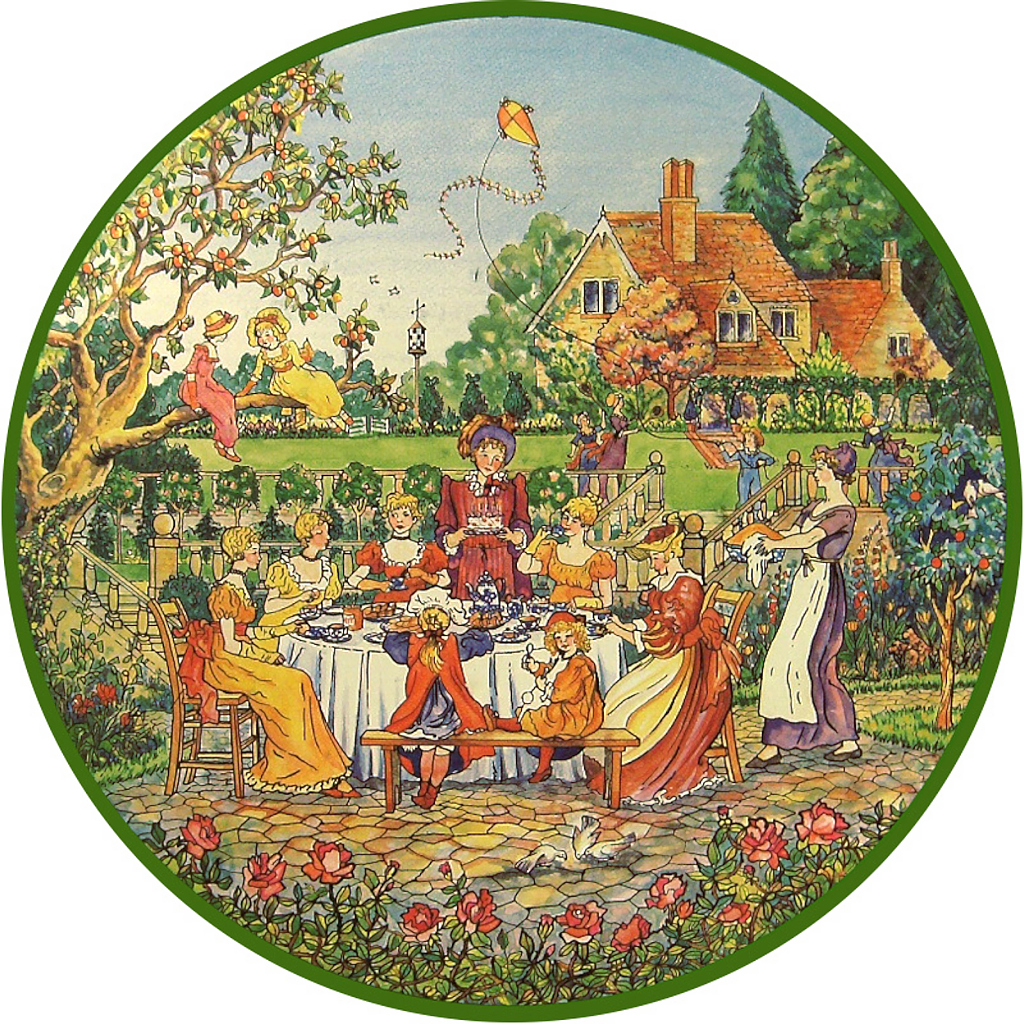
Thumb and Lappet
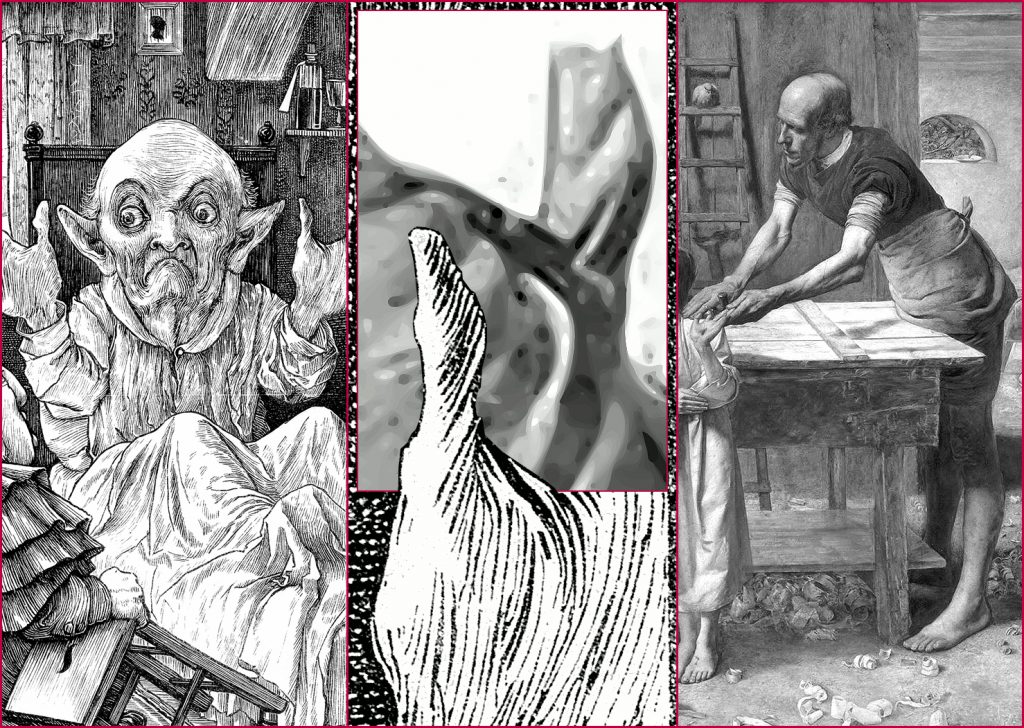
left]: Henry Holiday: Segment from a depictionof the Baker’s visit to his uncle (1876) in Lewis Carroll’s The Hunting of the Snark (engraved by Joseph Swain).
[center]: Doesn’t this thumb look more like a piece of cloth rather than like a thumb?
[right]: John Everett Millais: Redrawn Segment from Christ in the House of His Parents aka The Carpenter’s Shop (1850), at present on display at Tate Britain (N03584).
See also: snrk.de/page_sphinx#4panels | Twitter
Christ in the House of his Parents
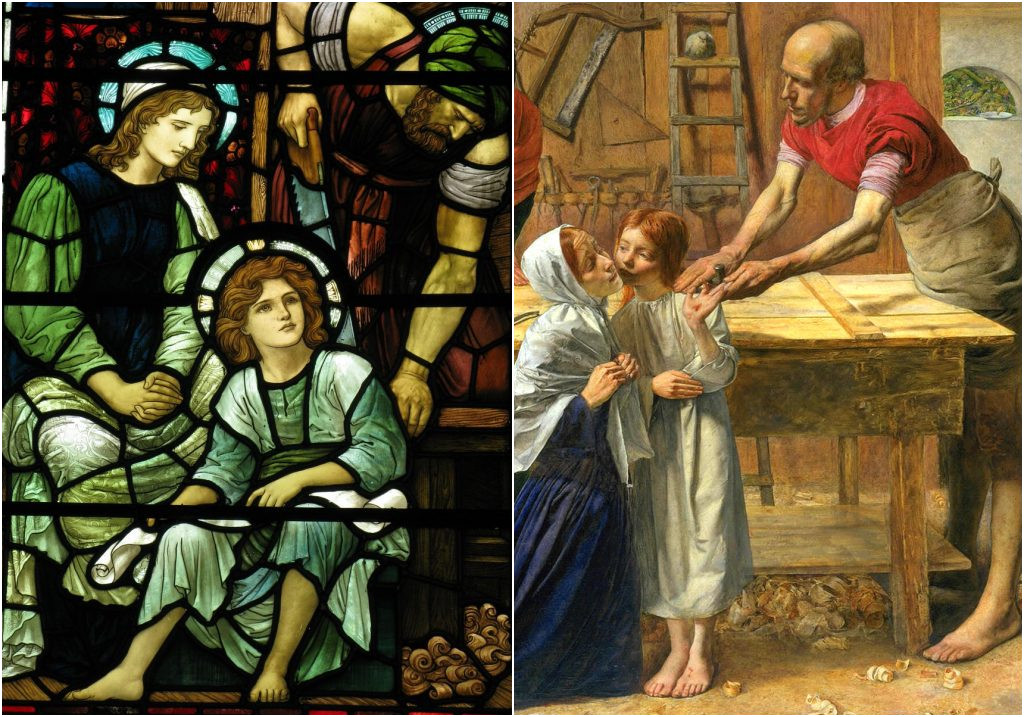
Christ in the House of his Parents: Details from a stained glass window (Brechin Cathedral, source: BSMPG @ Twitter) by Henry Holiday and from a painting by J.E. Millais.
The images are quite different. Important things they have in common with other Carpenter’s Shop paintings are the depiction of Joseph as a real carpenter at work and the wood shavings.
Wood Shavings
Ballad Form in Victorian Poetry
Wikispaces being closed down. Therefore I mirrored the post Ballad Form in Victorian Poetry. It helps to understand the form of The Hunting of the Snark:
- Original post: https://victorianpoetrypoeticsandcontext.wikispaces.com/Ballad+Form+in+Victorian+Poetry
- Mirrored post: snrk.de/Wikispaces/Ballad_Form_in_Victorian_Poetry.html
The article is the work of a student with the initials “CM” at Hobart and William Smith Colleges (partner institution of UVicEnglish), see the signature: CM/HWS/ENG 21. (Source: Alison Chapman)
(I also mirrored the wiki page on the Lewis Carroll Picture Book.)
Snark Metal
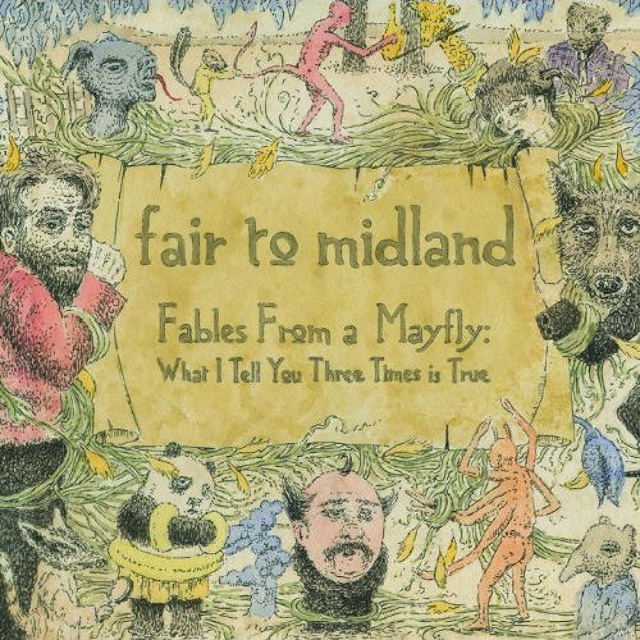
“What I tell you three times is true” is the most frequently quoted line from The Hunting of the Snark. Besides that, the lyrics of this album by the “alternative metal band Fair to Midland“ doesn’t take any references to Lewis Carroll’s ballad. But already today I listened to it more than three times.
Sadly, the band met the Boojum in 2013.
Using my Snark Assemblage
Somebody liked my Snark assemblage.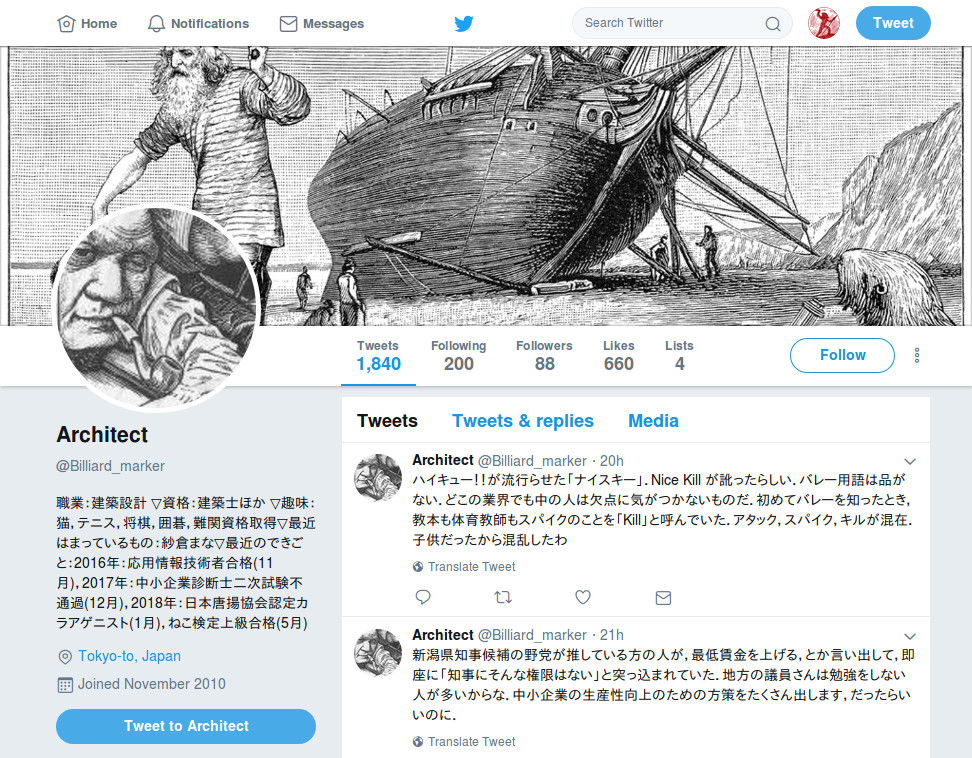 Source for the header image: snrk.de/page_snark-assemblage
Source for the header image: snrk.de/page_snark-assemblage
大丈夫! You can use the image in compliance with license CC BY-NC-ND 4.0 for the assemblage. Main artists: Conrad Martens & Thomas Landseer, Henry Holiday & Joseph Swain.
Where to find Henry Holiday’s Work?
Aidan McRae Thomson started the thread https://www.flickr.com/groups/1141451@N22/discuss/72157618226420981/ in May 2009.
Flat Earth
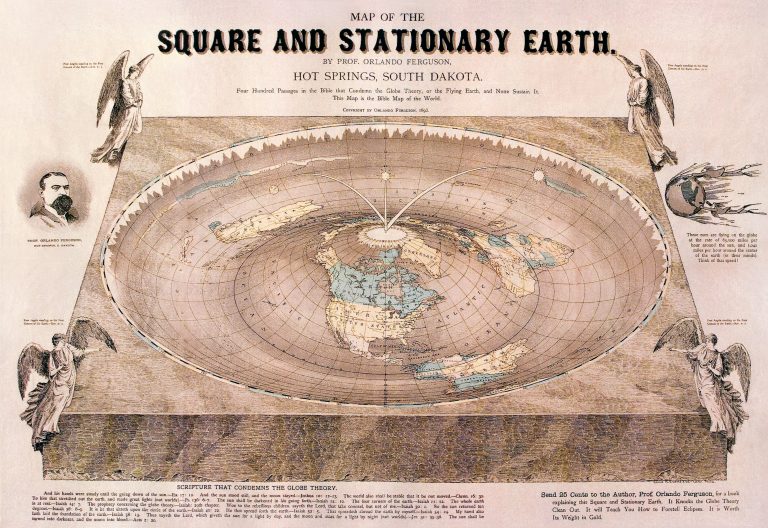 Image source: commons.wikimedia.org
Image source: commons.wikimedia.org
One of my articles in this blog has the title What can Science reveal? This is the quest of the Snark (quoting Philo M. Buck, 1942). I think, that the question what science can reveal is only one among several quests of the Snark. Another quest might be, how science reveals the world and how science can be threatened. Here, flat earth theory is a good example. That theory does not only aim at reverting scientific findings, but also at damaging science itself. I don’t know whether Dodgson/Carroll took any interest in that theory and the related debates, but its history helps me to improve my understanding of popular science debates and businesses in the Victorian society at around the time when Lewis Carrol wrote The Hunting of the Snark.
This week in the New Yorker, Alan Burdick wrote an article about Looking for Life on a Flat Earth, What a burgeoning movement says about science, solace, and how a theory becomes truth (2018-05-30). Very regrettably, Burdick failed to mention Christine Garwood‘s book Flat Earth: The History of an Infamous Idea (2008). That shouldn’t happen in a magazine like the New Yorker. Didn’t Burdick read that excellent book before he wrote his article?
Garwood shows why and how science can be threatened and is being threatened. This includes John Hampden‘s (1819-1891) discrediting of journalists 1870 (p. 76), who probably had quite similar reasons for media bashing as Donald Trump had and openly described them in February 2016. If you want to make a living as influencer, you need to control the presentation of knowledge. To understand that is as important today as it was in the 19th century. It is amazing how similar the 21st century anti-scientific populism is to what happened since “Parallax” started his flat earth business in the Victorian Britain. And he meant business.
Allusive Simpsons
Truth Tweaking Tweets
Why Donald Trump Can’t Kill the Truth, by Errol Morris, TIME, 2018-05-22:
[…] What is so scary about the present time is that people believe that they can assert truth just by screaming louder than others or repeating themselves endlessly, like the Bellman in Lewis Carroll’s “The Hunting of the Snark”: “What I tell you three times is true.” […]
In my view, tweaking the truth is nothing new. But the ability to tweet the tweaked truth within a few seconds to millions of people makes the difference. It turns Trump’s language (as well as the language of Trump haters) into a wide spread epidemy.
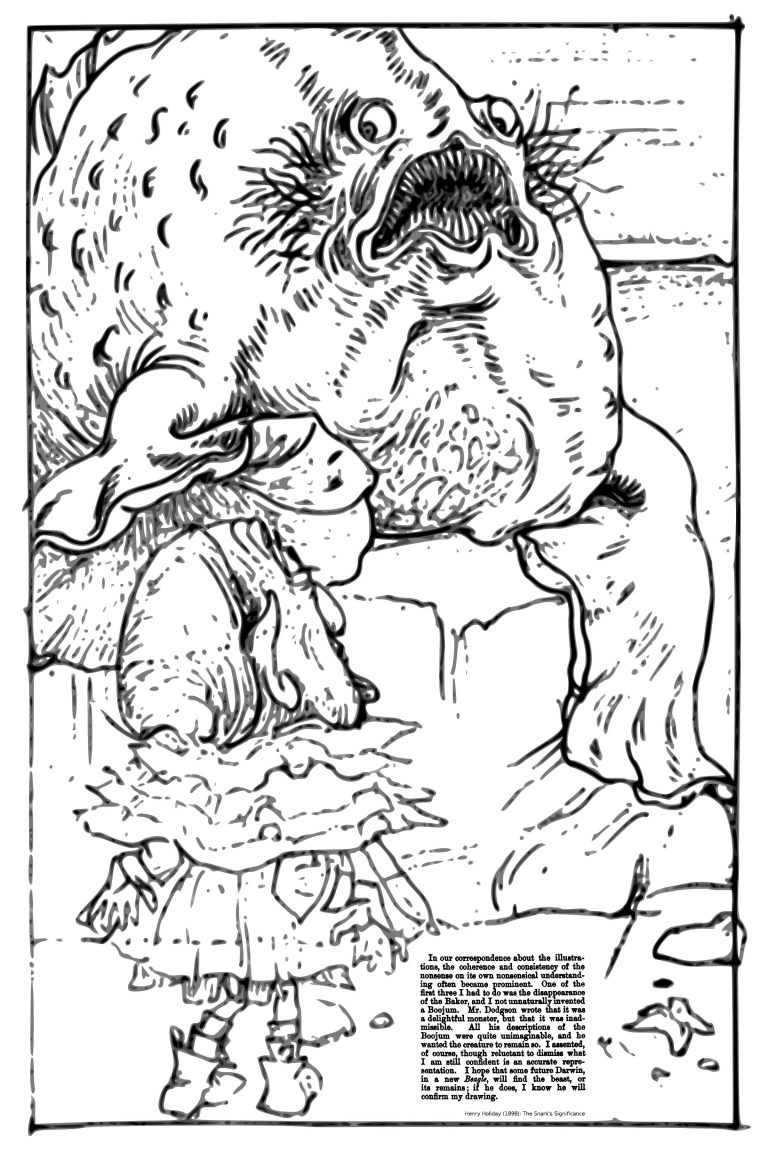 I think that Carroll’s tragicomedy (or even tragedy?) The Hunting of the Snark is very much about what we are experiencing in these days: Legimate dispute (Snark) is turning more and more into toxic eristic (Boojum). And beware if it bites you, it’s contagious! Our pursuit of happiness can take many paths, therefore conflicts are unaviodable parts of our journey. But beware of the day, if your Snark be a Boojum! For then you will softly and suddenly vanish away, and never be met with again.
I think that Carroll’s tragicomedy (or even tragedy?) The Hunting of the Snark is very much about what we are experiencing in these days: Legimate dispute (Snark) is turning more and more into toxic eristic (Boojum). And beware if it bites you, it’s contagious! Our pursuit of happiness can take many paths, therefore conflicts are unaviodable parts of our journey. But beware of the day, if your Snark be a Boojum! For then you will softly and suddenly vanish away, and never be met with again.
By the way: As for an on-line Snark, Morris’ article links to the Poetry Foundation. They do a good job, but Ebooks Adelaide offers a better on-line rendering of the poem. My version is based on an earlier Ebooks Adelaide version.
7777 $
Michael McNeff needed 50000 US$ for postprocessing his Snark movie. In December 2013 crowdfunding reached 7777 US$. Alas, that was not enough and the funding was stopped.
But the spin still is fun:
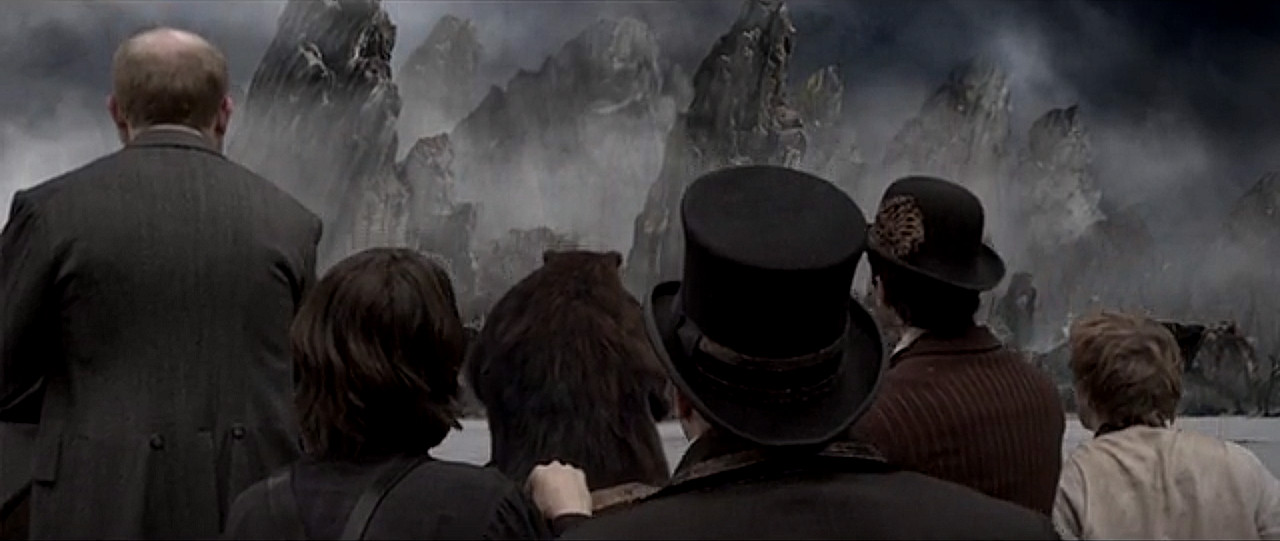
Let’s hope that in a few years the required computer power will be available for less then 777 US$.
Snarked Sutton Manor Woodland
The Snark in Haldon Forest
The Bonnetmaker is ready to hunt the Snark. Are you? Join her in Haldon Forest, April 5th-7th, for The Hunting of the Snark. Come prepared for an unforgettable adventure. For ages 6+https://t.co/buYgulM7a6@ForestArtWorks #Exeter #Devon #familytheatre pic.twitter.com/dZNIIWpnw5
— Burn the Curtain (@BurntheCurtain) March 31, 2018
Snarkapp
A trailer for our free app 'SnarkHunter'. For use in #HaldonForest, @BoldForestPark and #HamsterleyForest.
Available for Android and Apple:https://t.co/W4WwSZJTQMhttps://t.co/eSkrVdDpQq
— Burn the Curtain (@BurntheCurtain) March 19, 2018
我告诉你三次是真的!
Seeing Things
The issue comes up now and then.
Click on it if you don’t see the Instagram image.
Snark in the Woods
Update 2018-02-22: https://www.forestry.gov.uk/snarkhunter
First up on our new tour of 'The Hunting of the Snark' is @FCHaldonForest April 5th-7th, 7:30pm. Suitable for ages 6+ https://t.co/ji7dh86bhg
Take part in an unforgettable adventure to find the Snark.@tarmacdodgers pic.twitter.com/wridh9ePMO
— Burn the Curtain (@BurntheCurtain) February 21, 2018
2017-09-17
Forestry Commission of England:
NEWS RELEASE No: 16687
14 SEPTEMBER 2017Arts Council England grant awarded for exciting forest theatre experiences
The Arts Council has awarded £139,000 to the Forestry Commission and theatre partner Burn the Curtain to develop their outdoor theatre experiences. The substantial grant will enable Burn the Curtain to tour their sell-out evening theatre show, The Company of Wolves, based on the stories by Angela Carter, to three more forest locations this autumn.
In addition, a new theatre show will be developed around the nonsense poem by Lewis Carroll, ‘The Hunting of the Snark’. The experience will tour across seven forests in 2018 and will be accompanied by ‘Snark Hunter’, an innovative app which will bring the poem to life for forest visitors across the country. […]
(Thanks to Doug Howick for drawing my attention to this.)
Links:

